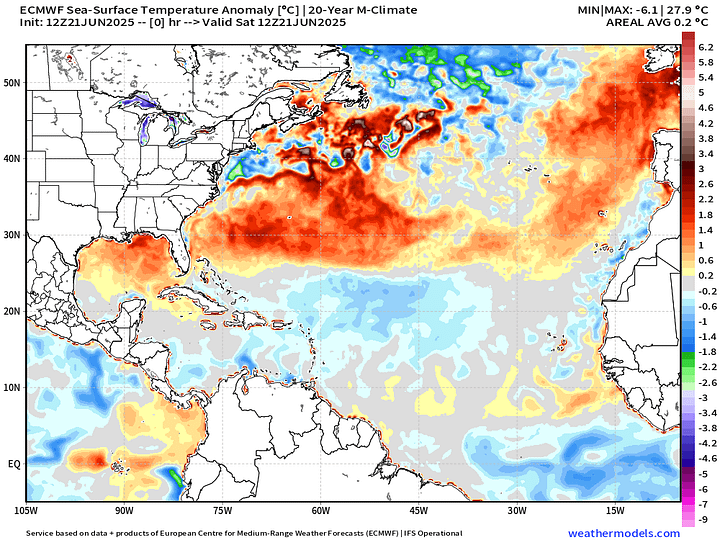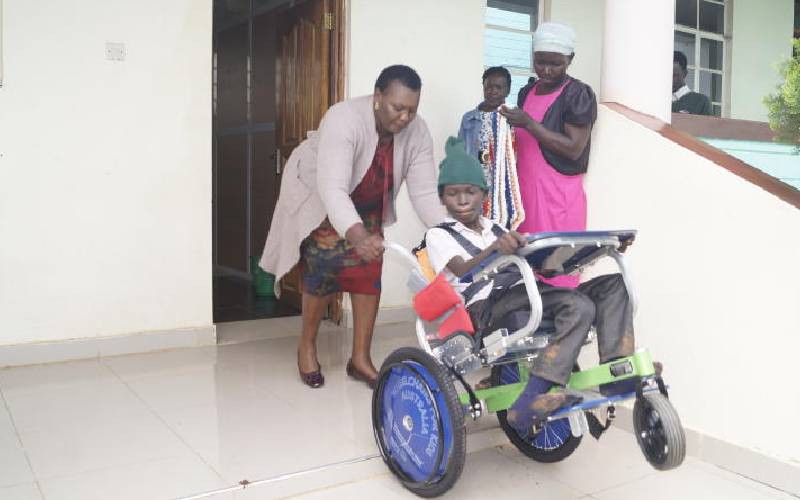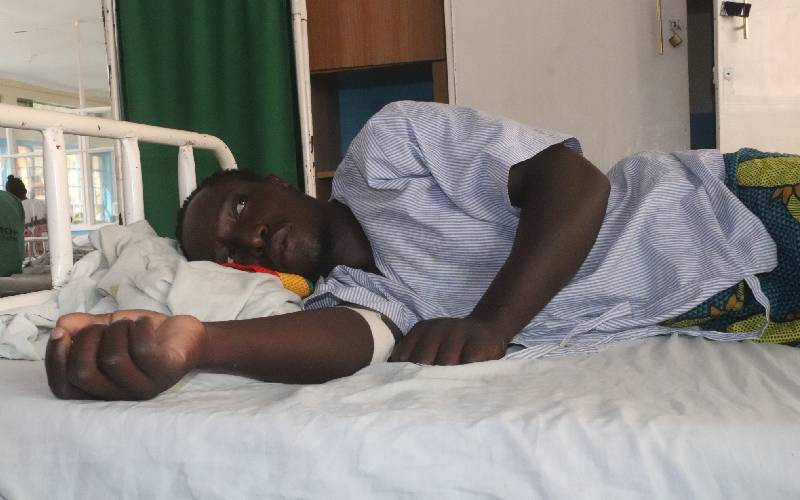June 21, 2025 Hurricane Season Saturday - by Dr. Ryan Maue
. My expectation for this year is 14 named storms, 7 hurricanes, and 3 majors. So far, 0 named storms, 0 hurricane, and 0 majors.
The next storm in the Eastern Pacific is Flossie, and it develops out of the ITCZ/monsoon trough just a bit further ESE of where Erick started out. This storm is yet another triggered by easterly waves arriving from Africa, through the Atlantic, and into the Caribbean where they then cross Central America.
Monster “heat dome” ridge dominates the Eastern U.S. forcing the tropical moisture plumes through Texas into the Plains and around the top into Canada. Need to watch for mesoscale convective complex systems like we saw last night in North Dakota with impacts similar to a hurricane over land.
The ITCZ and monsoon trough from Central America, through northern South America, and into the main development region (MDR) of the Atlantic continues to generate plenty of rainfall day after day.
A different view of the rainfall on 24-hour running accumulations. One a given day, the tropics can see 2-4” of rainfall in the heaviest convection, and generally 0.5” to 1” or more depending upon the additional lift or instability provided by tropical waves.
Hurricanes drop significantly more — on the order of 1-2 feet of rain in 24-hours over the ocean.
Ghost town for the next 7-days — through the end of June without a named storm.
More coverage of scattered storms over Africa.
Next plume of Saharan dust holds together through Bahamas and Florida by 8-days.


The sunset over the Eastern Atlantic shows the perpetual dust cloud from the Sahara.
but no development expected in the Atlantic, but probably Flossie out of the one crossing Central America by middle of next week.
Thank you to readers continuing into this Hurricane Season. My goal is to keep you informed about ongoing extreme weather events inside and outside of the tropics, but also a week (hopefully) heads up on what’s coming. I’ll be using a variety of weather modeling output, some of it may be unfamiliar, but it’s state-of-the-art and industry leading standard.
The ITCZ is suppressed to the coast of South America in 5-days with the leading edge of a powerful SAL which can be traced with the 20°C T850 isotherm. This is a good way to show the warm near-surface layer (about 1-1.5 km up) = very stable.
The dry air in the central Atlantic generally comes from the NE around the Azores High with some African influence.
The 20°C isotherm is a great demarcation or boundary of the Saharan Air Layers, which largely hold together across the entire Atlantic before breaking up into segments near northern Caribbean.
GFS has stopped with the false alarms in the Caribbean, thankfully.
These are 51-realizations of the same model with different initial conditions. Each ensemble gets equal ~2% weight in a mean calculation.
Blank slate through July 1st.
Through July 6th. Nothing happening.
Flossie should be underway in 4-5 days if all goes to plan.
Note the digging trough off the U.S. West coast yet again. Very persistent pattern due to the high pressure at the surface sprawled across the subtropical and mid-latitude Pacific NE of Hawaii.
The track of Flossie will help push monsoon moisture into Texas and New Mexico, but Arizona will miss out.
Early formation of Flossie = stronger / longer-lifecycle = more ACE.
Can’t entirely discount Flossie affecting the Mexico coastline, but that’s next weekend, plenty of time to watch.
The Interesting spin in the subtropics doesn’t look like it will amount to much but could become a named Tropical Storm briefly.
Invest 94W will see pressure falls but enough organization for a named TS?
A low chance of something spinning out of the NE side of the monsoon trough, but nothing imminent.
June 2025: We use the ECMWF for medium-range prediction because the GFS can’t be trusted due to false-alarm bias, and unrealistic intensification of tropical convection into spurious (ghost) storms. I don’t agree this is a good thing like CNN.
We can look at the GFS every day for weeks and see a modeled tropical storm or hurricane in the Caribbean or Gulf especially after Day 10. However, this is a known bias/false alarm problem with spurious convective — vorticity spin-ups due to the convective parameterization or estimation of vorticity generation due to intense diabatic heating. Perhaps it’s worthwhile to show what will not happen.









